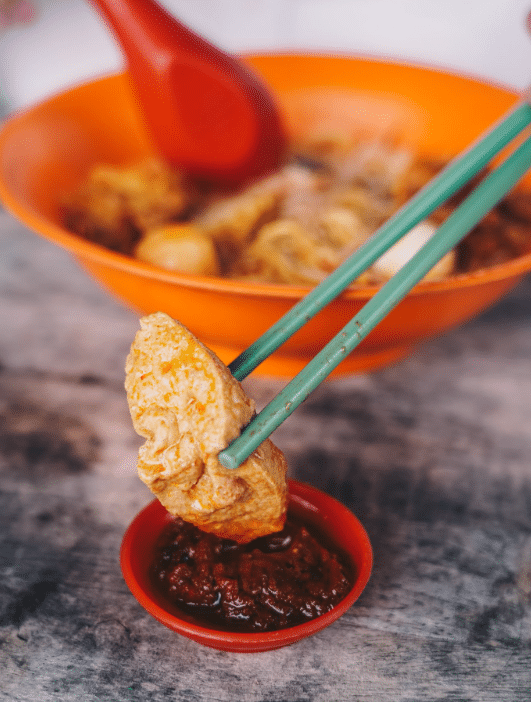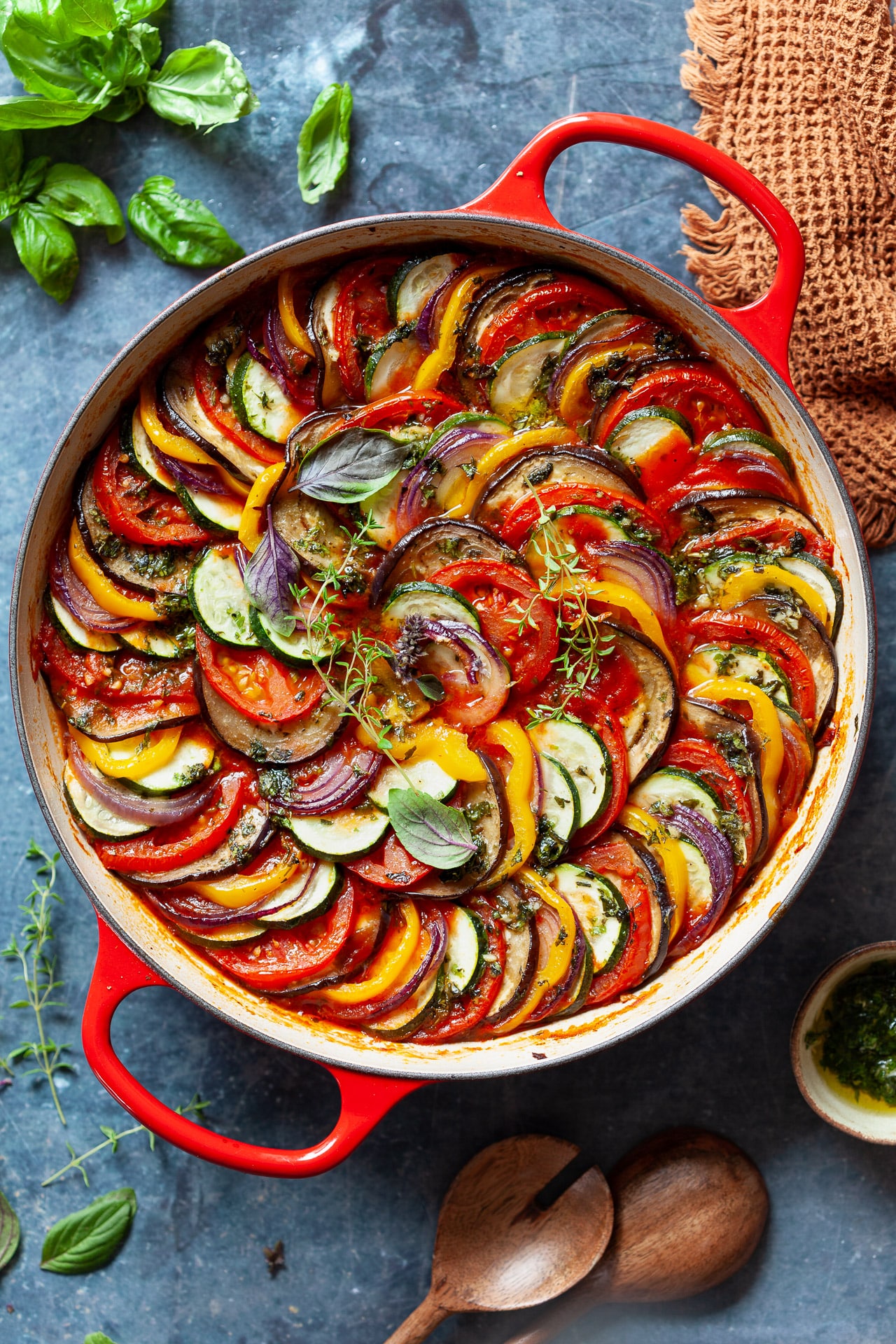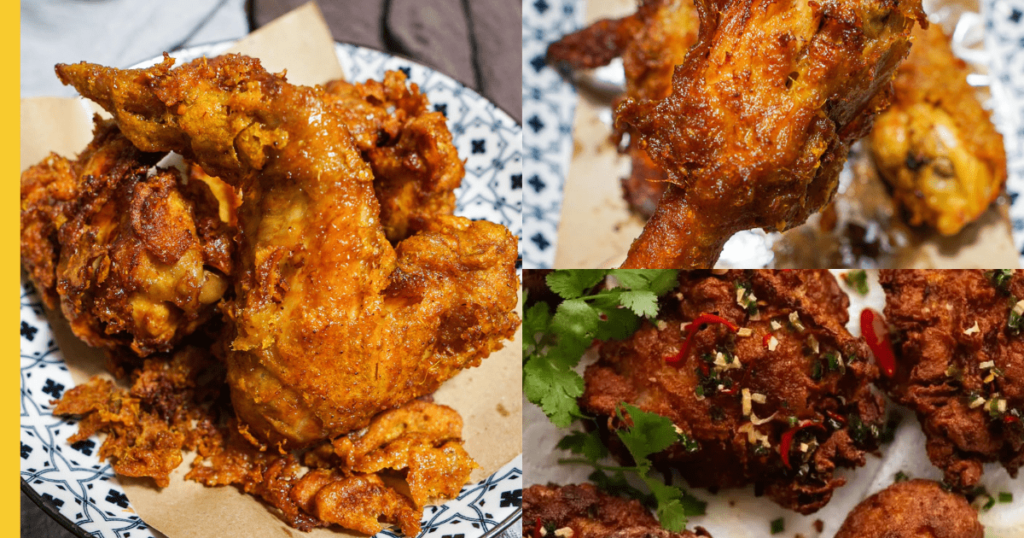A Journey Through the Flavors of Curry Laksa: From Humble Beginnings to Culinary Masterpiece
Related Articles
- A Journey Into The Delicious World Of Lebanese Shawarma: From Ancient Roots To Modern Flavors
- A Deep Dive Into The Flavorful World Of Sate Padang: From Humble Beginnings To Culinary Masterpiece
- Lemper: A Culinary Journey Through Indonesia’s Flavors
- Tom Yum Goong: A Dive Into The Spicy, Sour, And Aromatic World Of Thai Cuisine
- A Deep Dive Into Batagor: The Indonesian Fish Cake Delights
Introduction
In this article, we dive into A Journey Through the Flavors of Curry Laksa: From Humble Beginnings to Culinary Masterpiece, giving you a full overview of what’s to come
A Journey Through the Flavors of Curry Laksa: From Humble Beginnings to Culinary Masterpiece

Curry laksa, a vibrant and aromatic noodle soup, is a beloved dish across Southeast Asia, particularly in Malaysia, Singapore, and Indonesia. This culinary masterpiece boasts a symphony of flavors, a testament to the region’s diverse cultural influences and cooking traditions. This article will delve into the fascinating world of curry laksa, exploring its origins, ingredients, variations, and techniques to help you create your own flavorful masterpiece at home.
Tracing the Roots: A Journey Through Time and Flavor
The origins of curry laksa are steeped in the rich history of Southeast Asia, with influences from Malay, Chinese, and Indian culinary traditions. The word "laksa" itself is believed to have originated from the Tamil word "lakṣa," meaning "hundreds of thousands," perhaps referencing the vast array of ingredients used in the dish.
Malay Influences: The Malay heritage of laksa is evident in the use of coconut milk, a staple ingredient in many Malay dishes. This creamy base provides a rich texture and enhances the overall flavor profile.
Chinese Influences: The Chinese influence is apparent in the use of noodles, often rice noodles or flat wheat noodles, a common element in Chinese cuisine. The addition of ingredients like shrimp paste and fermented beancurd (tofu) further reinforces the Chinese connection.
Indian Influences: The Indian influence is most prominent in the use of spices, particularly turmeric, chili peppers, and curry leaves, which add depth and complexity to the broth.
Deconstructing the Dish: A Symphony of Flavors
Curry laksa is more than just a soup; it’s a culinary symphony where every ingredient plays a crucial role in harmonizing the flavors. Here’s a closer look at the key components:
1. The Broth: The foundation of any laksa is the broth. It’s a rich, creamy, and aromatic blend of coconut milk, spices, and often fish or seafood.
2. The Noodles: The noodles, usually rice or flat wheat noodles, absorb the flavorful broth and provide a satisfying texture.

3. The Proteins: The protein component of laksa can vary depending on the region and personal preference. Common choices include chicken, seafood (shrimp, fish, crab), tofu, or even duck.
4. The Vegetables: A medley of vegetables adds freshness, color, and nutritional value to the dish. Common additions include bean sprouts, bok choy, spinach, and long beans.
5. The Garnishes: The finishing touches are the garnishes, which add a burst of flavor and visual appeal. Common garnishes include chopped fresh herbs like coriander, basil, and mint, sliced chilies, lime wedges, and a dollop of chili paste.
Unveiling the Variations: A Culinary Tapestry of Flavors
Curry laksa is a versatile dish with numerous regional variations, each showcasing unique flavor profiles and ingredient combinations.
1. Curry Laksa (Malaysia): The most common type of laksa found in Malaysia, this version features a creamy coconut milk broth, a blend of spices including turmeric, chili peppers, and lemongrass, and often includes chicken, shrimp, or fish.
2. Laksa Johor (Malaysia): Originating from the state of Johor, this version is known for its robust flavor and the addition of a fermented shrimp paste (belacan), which adds a pungent and salty depth to the broth.
3. Laksa Lemak (Malaysia): "Lemak" translates to "fatty" in Malay, and this version features a rich and creamy broth made with thick coconut milk, resulting in a more decadent and indulgent flavor.
4. Laksa Penang (Malaysia): This version is characterized by its milder flavor, with less chili and a greater emphasis on the use of fresh herbs and spices.
5. Laksa Singapore: The Singaporean version of curry laksa is often more spicy and includes a wider variety of ingredients, such as cockles, tofu puffs, and a generous amount of chili paste.
6. Laksa Asam (Indonesia): This Indonesian version features a sour and tangy broth made with tamarind and other souring agents, creating a unique and refreshing flavor profile.
Mastering the Art of Curry Laksa: A Step-by-Step Guide
Now that we’ve explored the diverse world of curry laksa, let’s dive into the practicalities of crafting this flavorful dish at home.
Ingredients:

- Broth:
- 2 cups coconut milk
- 1 cup chicken or vegetable broth
- 1 tablespoon curry powder
- 1 teaspoon turmeric powder
- 1 teaspoon ground coriander
- 1/2 teaspoon cumin powder
- 1/4 teaspoon cayenne pepper (adjust to your spice preference)
- 1 lemongrass stalk, bruised
- 1 galangal (or ginger) piece, thinly sliced
- 1 bay leaf
- 1 teaspoon salt
- 1/2 teaspoon sugar
- Protein:
- 1 cup cooked chicken, shredded
- 1/2 cup cooked shrimp, peeled and deveined
- Noodles:
- 1 package rice noodles or flat wheat noodles
- Vegetables:
- 1 cup bean sprouts
- 1/2 cup chopped bok choy
- 1/4 cup chopped spinach
- 1/4 cup sliced long beans
- Garnishes:
- 1/4 cup chopped fresh coriander
- 1/4 cup chopped fresh basil
- 1/4 cup chopped fresh mint
- 1 sliced red chili pepper
- 1 lime wedge
- Chili paste (optional)
Instructions:
- Prepare the Broth: In a large pot, combine the coconut milk, broth, curry powder, turmeric, coriander, cumin, cayenne pepper, lemongrass, galangal (or ginger), bay leaf, salt, and sugar. Bring to a simmer and cook for 15 minutes, or until the broth has thickened slightly.
- Cook the Noodles: While the broth is simmering, cook the noodles according to package instructions. Drain and set aside.
- Add the Protein and Vegetables: Add the shredded chicken and cooked shrimp to the simmering broth. Cook for 5 minutes, or until the shrimp is cooked through.
- Assemble the Laksa: Divide the cooked noodles into bowls. Ladle the hot broth over the noodles, ensuring each bowl gets a good mix of chicken, shrimp, and vegetables.
- Garnish and Serve: Top each bowl with chopped coriander, basil, mint, sliced chili, and a lime wedge. Serve immediately.
Tips for Success:
- Adjust the Spice Level: The cayenne pepper level in the recipe is a starting point. Feel free to adjust it to your personal preference.
- Use Fresh Ingredients: Fresh herbs and spices are essential for a truly flavorful laksa.
- Don’t Overcook the Noodles: Overcooked noodles will become mushy. Cook them according to package instructions for the best texture.
- Garnish Generously: Garnishes add a burst of flavor and visual appeal. Don’t be shy with the herbs and chilies.
- Experiment with Variations: Feel free to experiment with different protein choices, vegetables, and garnishes to create your own unique laksa experience.
Culinary Adventures: Exploring the World of Laksa
Once you’ve mastered the basic recipe, it’s time to embark on your own culinary adventures. Here are some ideas to inspire your creativity:
1. Vegan Laksa: Substitute the chicken and shrimp with tofu or tempeh for a delicious vegan version.
2. Laksa with a Twist: Add a touch of sweetness to your laksa with a drizzle of palm sugar or a splash of pineapple juice.
3. Laksa with Extra Heat: For a fiery laksa experience, add more cayenne pepper or a dollop of chili paste.
4. Laksa with a Tropical Twist: Incorporate fresh mango, pineapple, or papaya for a sweet and tangy twist.
5. Laksa with a Spicy Kick: Add a tablespoon of sambal oelek (Indonesian chili paste) to the broth for an extra kick of heat.
Beyond the Bowl: Exploring the Versatility of Curry Laksa
Curry laksa is more than just a soup; it’s a versatile dish that can be enjoyed in a variety of ways.
1. Laksa Noodles: The flavorful broth and noodles can be enjoyed as a separate dish, perfect for a quick and satisfying meal.
2. Laksa Salad: Combine the ingredients of laksa with a bed of mixed greens for a refreshing and flavorful salad.
3. Laksa Pizza: Top a pizza crust with the laksa ingredients for a unique and savory pizza experience.
4. Laksa Soup Dumplings: Fill soup dumplings with the laksa ingredients for a flavorful and fun appetizer.
5. Laksa Curry: Use the laksa broth as the base for a curry dish, adding your favorite vegetables and protein.
Embracing the Cultural Significance: A Culinary Legacy
Curry laksa is not just a delicious dish; it’s a symbol of cultural heritage and culinary creativity. Each region and family has its own unique recipe, passed down through generations, reflecting the diverse flavors and influences of Southeast Asia.
By embracing the history and traditions of curry laksa, we not only enjoy a delicious meal but also celebrate the rich culinary tapestry of this vibrant region.
Conclusion:
Curry laksa is a culinary masterpiece, a testament to the diverse flavors and culinary traditions of Southeast Asia. From its humble origins to its numerous variations, this dish continues to captivate taste buds and inspire culinary creativity. By exploring the ingredients, techniques, and cultural significance of curry laksa, we can appreciate the artistry behind this beloved dish and embark on our own flavorful adventures in the world of Southeast Asian cuisine.
Closure
Thank you for reading! Stay with us for more insights on A Journey Through the Flavors of Curry Laksa: From Humble Beginnings to Culinary Masterpiece.
Don’t forget to check back for the latest news and updates on A Journey Through the Flavors of Curry Laksa: From Humble Beginnings to Culinary Masterpiece!
We’d love to hear your thoughts about A Journey Through the Flavors of Curry Laksa: From Humble Beginnings to Culinary Masterpiece—leave your comments below!
Stay informed with our next updates on A Journey Through the Flavors of Curry Laksa: From Humble Beginnings to Culinary Masterpiece and other exciting topics.





